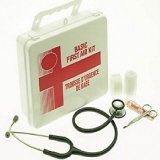|
Open Mind, Reducing the Risk-Do You Want To?

Reducing Your Risk of Heart Disease and Cancer
Based on what we know, Open Mind, Reducing the Risk offers to suggest some ways
you may reduce your risks of heart disease and cancer. These suggestions emphasize the need to eat a variety of foods each day.
They also include some "mealtime stratergies" that you can use to plan meals
that avoid too much fat, saturated fat, cholesterol, and sodium, and that
help you to get adequate starch and fiber.These strategies are
consistent with the Department of Health and Dietary Guidelines for Europeans
and Americans.
Here's how the Choose More Often approach works:
Low-fat meat, poultry, fish Lean cuts of meat trimmed of fat (round tip roast, pork tenderloin, loin lamb chop), poultry without skin, and fish, cooked without breading or fat added. Low-fat dairy products 1 percent or skim milk, buttermilk; low-fat or nonfat yogurt; lower fat cheeses (part-skim ricotta, pot, and farmer); ice milk, sherbet. Dry beans and peas All beans, peas and lentils--the dry forms are higher in protein. Whole grain products Breads, bagels, and English muffins made from whole wheat,rye, bran, and corn flour or meal; whole grain or bran cereals; whole wheat pasta; brown rice; bulgur. Fruits and vegetables All fruits and vegetables (except avocados, which are high in fat, but that fat is primarily unsaturated). For example, apples, pears, cantaloupe, oranges, grapefruit, pineapple, peaches, bananas, carrots, broccoli, Brussels sprouts, cabbage, kale, potatoes, tomatoes, sweet potatoes, spinach, cauliflower, and turnips, and others. Fats and oils high in unsaturates Unsaturated vegetable oils, such as canola oil, corn oil, cottonseed oil, olive oil, and soybean oil, and margarine; reduced-calorie mayonnaise and salad dressings. To assure an adequate diet, choose a variety of foods daily including selections of vegetables; fruits; whole-grain breads and cereals; low-fat dairy products; poultry, fish, and lean meat, dry beans and peas. Here are some tips for following the Choose More Often approach in three important areas: grocery shopping, food preparation, and eating out.Take notice of these suggestions and you and your body will benefit. Return to Open Mind Health
|












